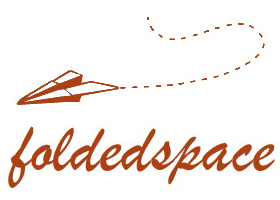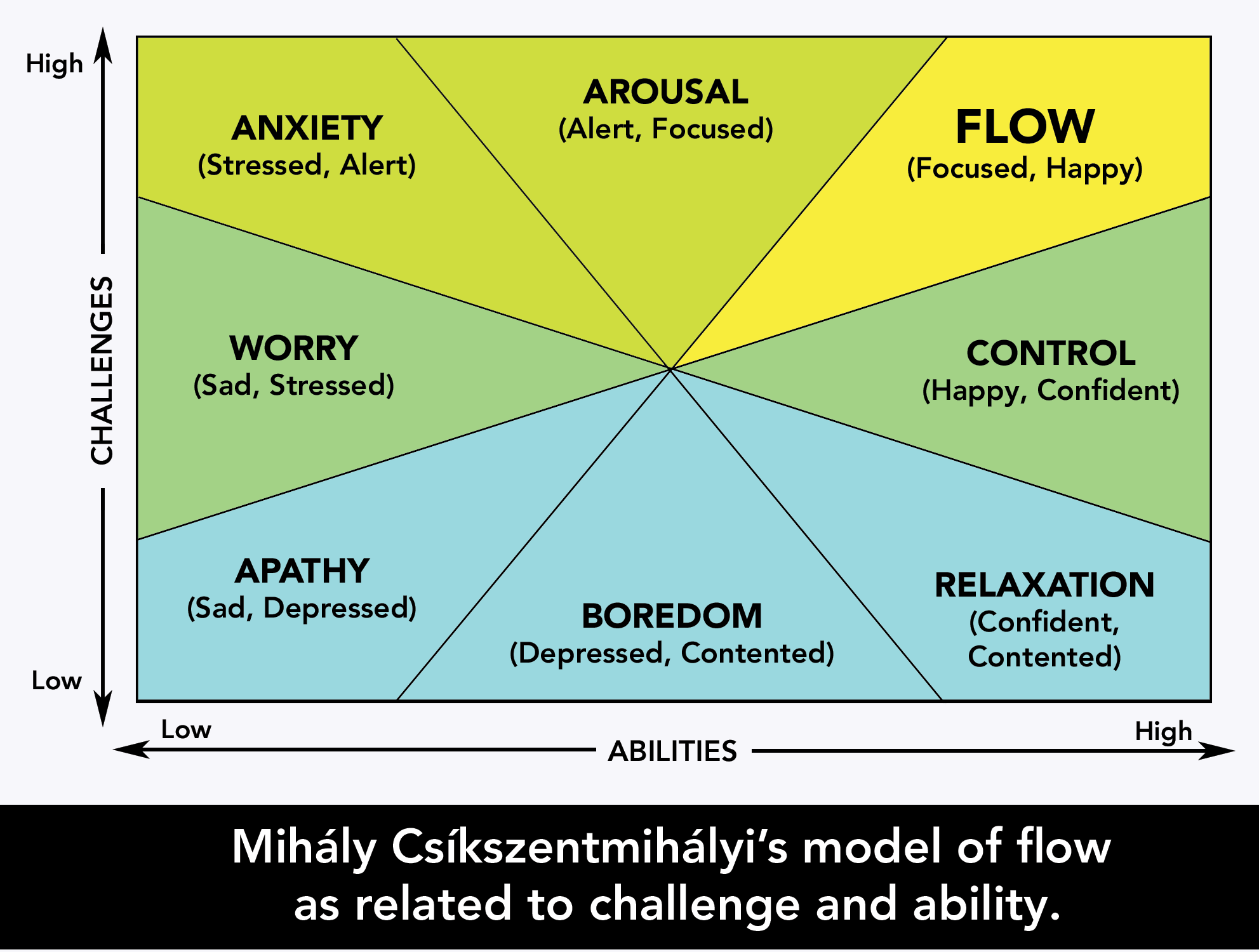I found “flow” in the Peruvian Andes. I also tend to experience it while writing. I’ve achieved it while making boxes in a factory, while preparing a speech, and while mowing the lawn. (For real!) Though each of these activities was very different, they shared some commonalities that helped me get “in the zone”. This leads me to wonder: Can happiness be somehow be cultivated? Turns out, it can.
Through Mihály Csíkszentmihályi‘s research into flow (or optimal experience), he found that it’s possible for a person to gain control over the quality of their daily experience, to build enjoyment into even routine and mundane activities. His studies of diverse populations around the world have shown that our best moments contain at least one — and often all — of the following characteristics (some of which overlap):
- A challenging activity that requires skill. Flow occurs at “the boundary between boredom and anxiety, when the challenge is just balanced with the person’s capacity to act.” To experience flow, you have to be doing something difficult — but not too difficult.
- The merging of action and awareness. Because challenging tasks require full attention, “people become so involved in what they are doing that the activity becomes spontaneous, almost automatic.”
- Clear goals and feedback. The vast majority of peak experiences occur during goal-directed actions bounded by rules, such as playing chess, programming a computer, or climbing a mountain. (Or, in my case, mowing the lawn.)
- Concentration on the task at hand. To achieve optimal experience, you can’t be distracted. You have to be absorbed in what you’re doing. As you focus, order comes to your consciousness, which leads to contentment and joy. Fear and worry fader away. You are fully present in the “now”.
- A sense of control. During the flow experience, you feel in control — or that you could be in control. More precisely, you aren’t worried that you might lose control, a state so typical of much of modern life. To achieve flow, you must believe that you’re able to influence the outcome of the activity.
- The loss of consciousness. During a peak experience, you lose sense of who you are. You become one with your environment, a part of a greater whole. You’re no longer aware of yourself as an individual.
- The transformation of time. When you’re in the zone, the passage of time is altered. In some ways, it slows — minutes seem like hours. In other ways, it quickens — hours seem like minutes. You lose track of the clock. This “freedom from the tyranny of time [adds] to the exhilaration we feel during a state of complete involvement.”
That first point merits a closer look. To achieve flow, you have to find a balance between your abilities and the challenge of the task at hand. If what you’re doing is too difficult for your current skill level, you’ll become anxious. If the task is easy and you’re good at it, it’ll be a relaxing pastime. Here’s a graphical representation of the flow model:
According to Csíkszentmihályi, “The key element of an optimal experience is that it is an end in itself.” You might need to complete the task you’re working on for other reasons, but you’d do it even if it weren’t required. You’re doing it not for some future benefit, but because the task itself is so rewarding.
When do you encounter flow? Do yo have these peak experiences often? For me, writing is the activity most likely to induce the flow state. Just last week, as I was racing to complete the “Get Rich Slowly” course, I experienced this sort of peak experience. I was working at the limit of my capabilities, and I loved it. What about you?


Has anyone ever looked at this flow state in the context of team activities? I don’t mean a team activity where there are multiple people who are each doing their own thing most of the time with small periods of interaction, like you might find hiking through the Andes with a group, but with long stretches where you’re essentially doing your own thing, but rather something where constant communication and interaction are required between teammates. I’m thinking of something like a basketball game or (what made me think of this) crewing a racing boat.
All the examples are of primarily solitary activities.
Good analysis… for a static view. Maybe I’m more ADD than others, but I’ve always found simple diversity to be a great source of enjoyment. If you had to ride the rapids, like in the picture, three times a day, every day, the enjoyment ceases.
My wife studied the art of cooking for a while. She tells me the secret of the French is they make small portions so you only eat until “it’s not exquisite any more.” If I haven’t talked to a neighbor in a while, that becomes a great source of enjoyment. People who pay millions for a house with a terrific view stop seeing the view after a while.
One more secret to enjoyment, then, is to program in variety of some sort. It can be as simple as a different route to work, striking up a conversation with a stranger in the grocery line, or reading a new type of book. What’s the title of your new book again? 🙂
Remember that JD has actually been diagnosed with ADHD!
I’ve been pondering a similar thing myself since first reading about Flow. I think you’re referring to specialists versus generalists, and at first all the language sounded quite specialist-specific (I’m the inveterate generalist myself, so I feel your pain!). However, flow seems to exist specifically where challenge and skill are both high. If you keep doing the same thing, it won’t be challenging!
I get the impression that above a certain minimum skill level, flow can always be found by picking appropriately-levelled challenges. So you could attain it by finding a tough challenge in a field you’re familiar with (which would be a new experience in itself) or by finding a moderate challenge in a field you’re relatively new to. Either way the experience of losing yourself in the task is the same.
I noticed the transformation of time at work they other day. I had a wrestling match in front of a crowd and I absolutely don’t remember anything. I also had no concept of time in the ring until the ref told me it was time to wrap it up.
Amazing – I literally just came home today from a day of training on ‘Resilience’, and we looked at this exact model you’ve highlighted above!
One observation I had was around the ability level – I think ‘perceived’ ability is also a big factor here. For example, you can easy get overwhelmed and anxious by a large project, that might be quite challenging but well within your skill set. So even though you have the ability, you might spend a lot of time in the ‘anxiety’ area.
For me, one of the most important characteristics from the list above is being present in the ‘now’, and fully immersing yourself in what you’re doing (which also helps avoid the situation above of becoming anxious and getting overwhelmed with the enormity of some projects). This is easiest for us when we’re doing activities in our ‘flow sweet spot’, but I think we can do this more with every day tasks also. Being in the moment is such a powerful tool for enjoying everything in life.
Cheers,
Jason
Tyler –> Interesting idea. I’ve experienced sublime group flow when I was in a really good band. There were nights where we just clicked together. It was like I was no longer playing guitar; the music was coming from elsewhere around us. I didn’t need to control my hands, they were doing the chords on their own. Were the drums following me? Was I following the drums? The bass? No idea. It was all one. Time would just melt away.
Great article JD! I appreciate the insight. Took me a re-read of this and the other article but after it clicked…it is such a great concept.
The flow chart is on point and man it is so descriptively accurate.